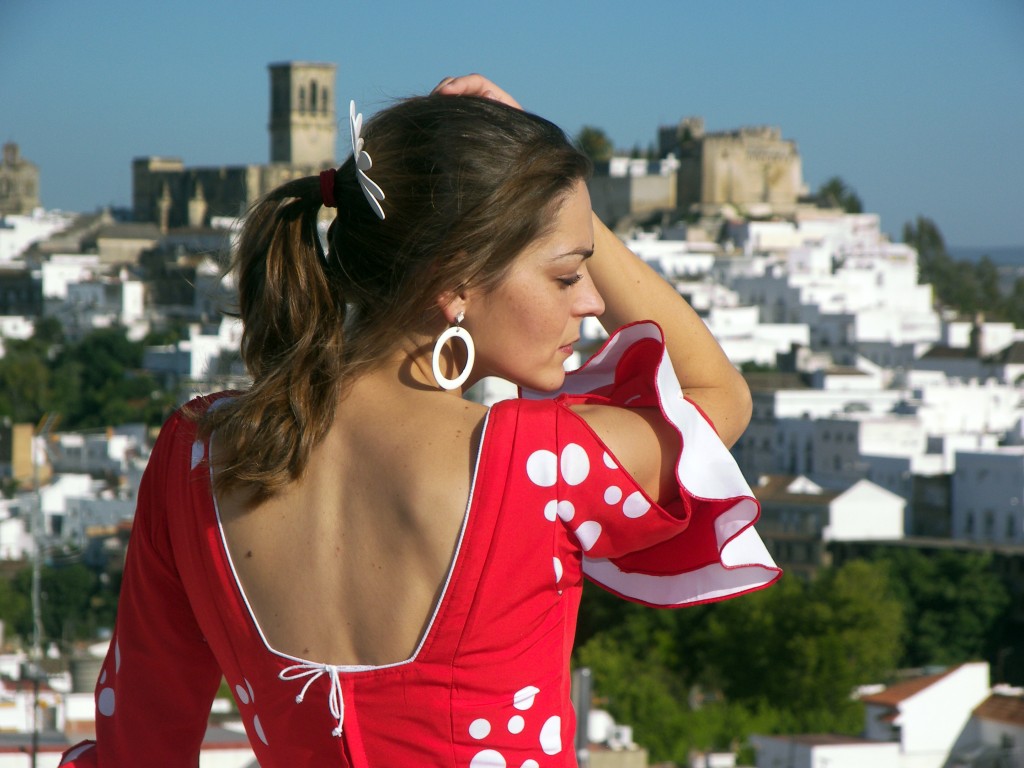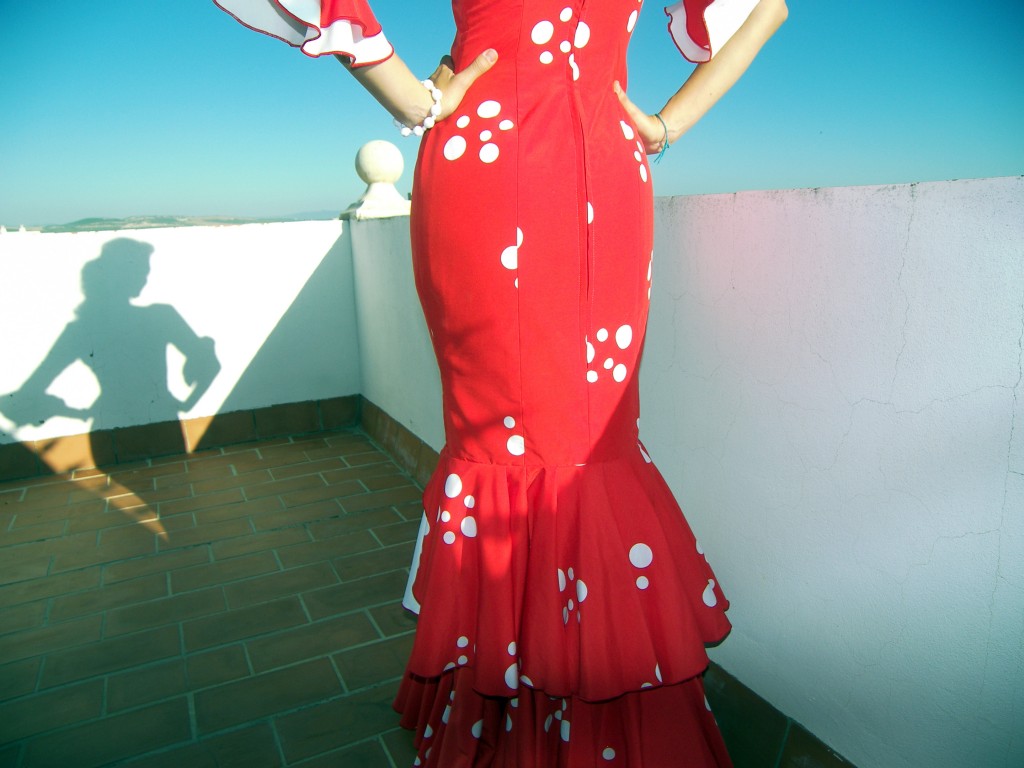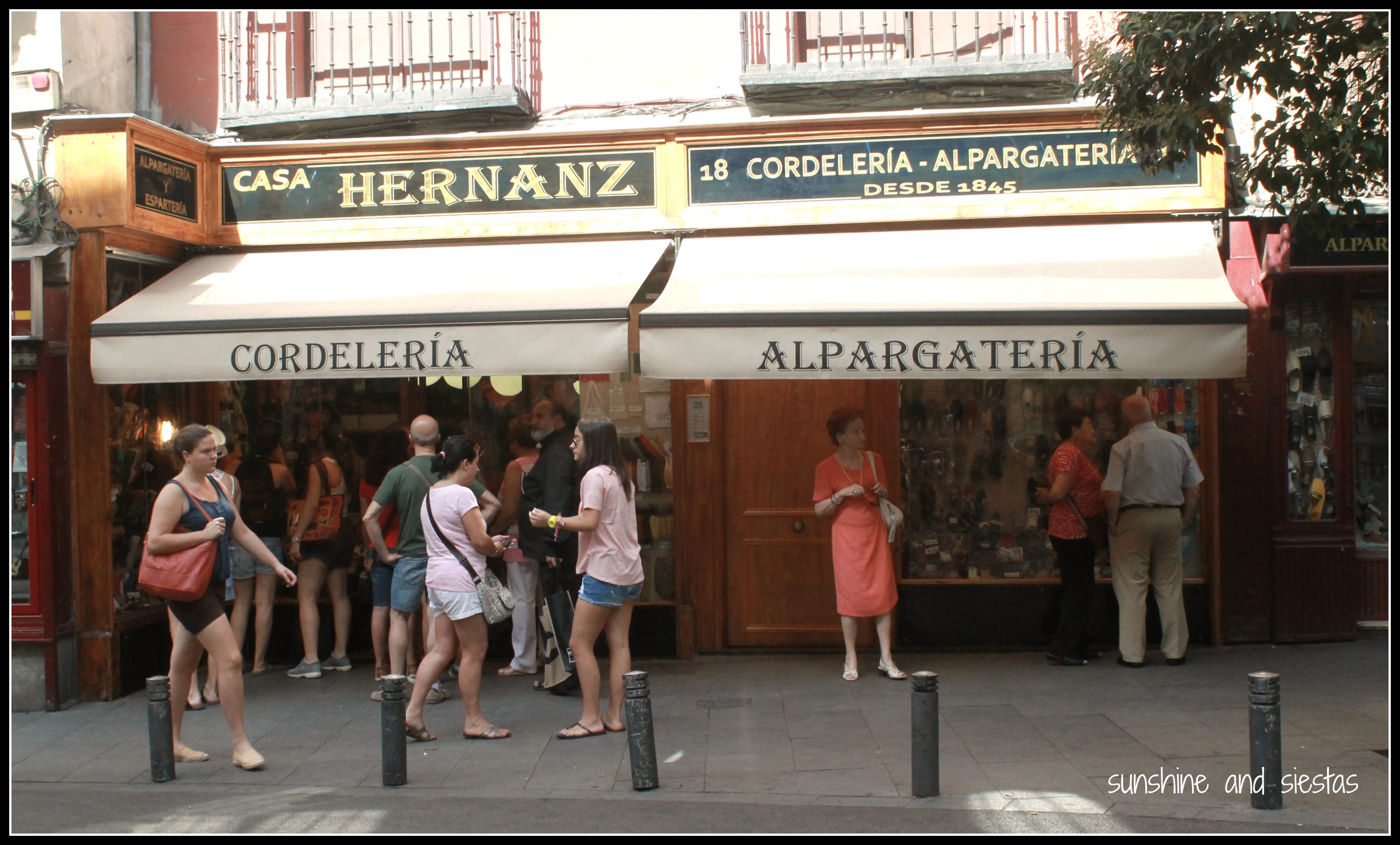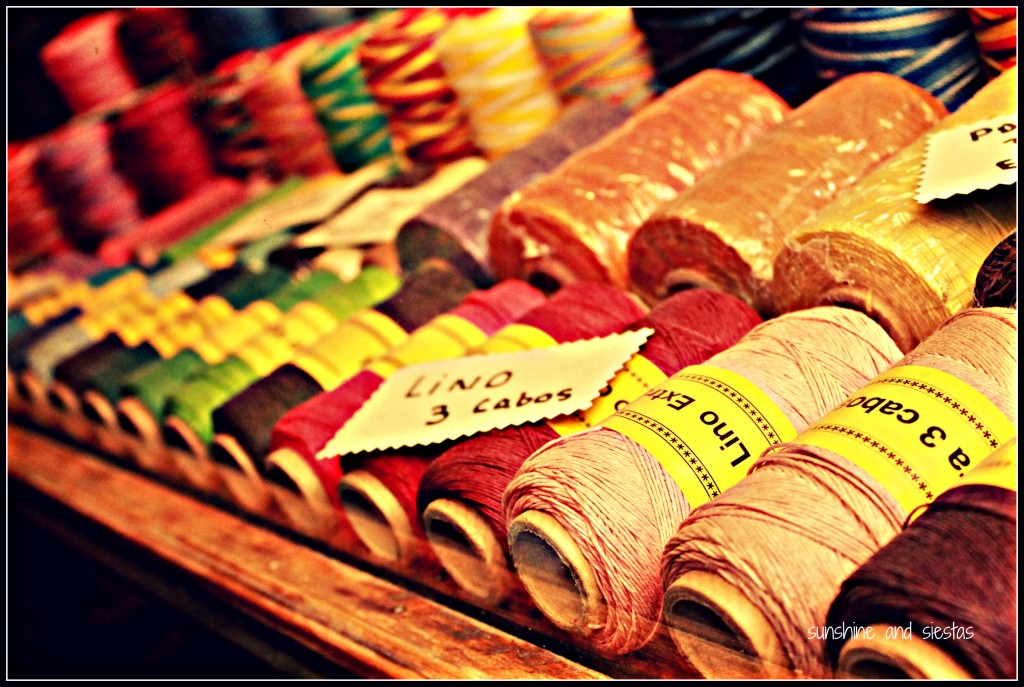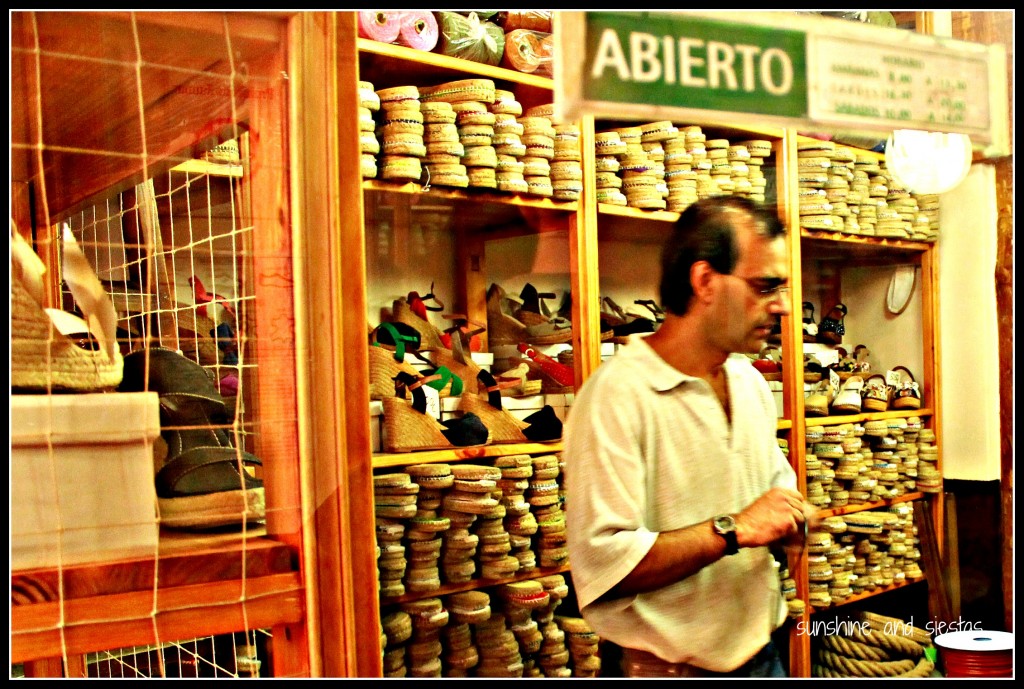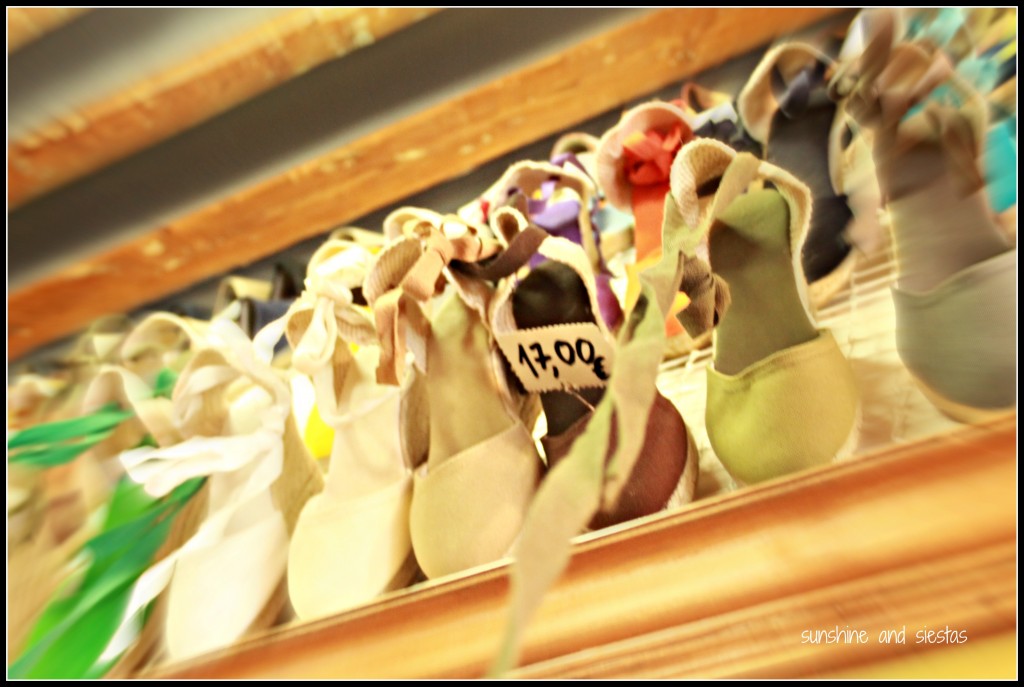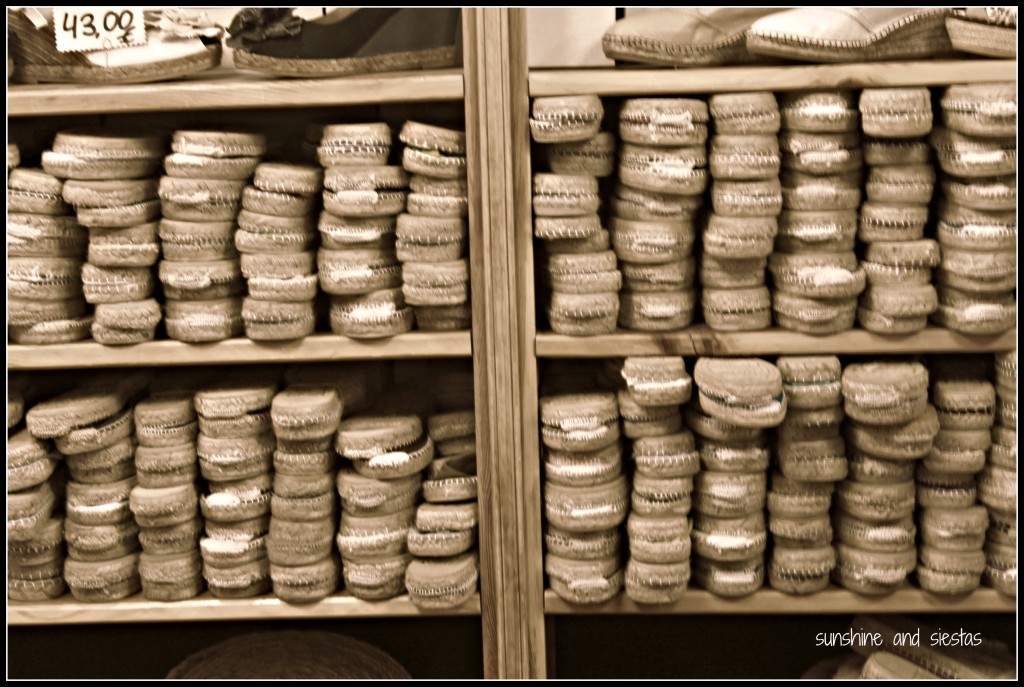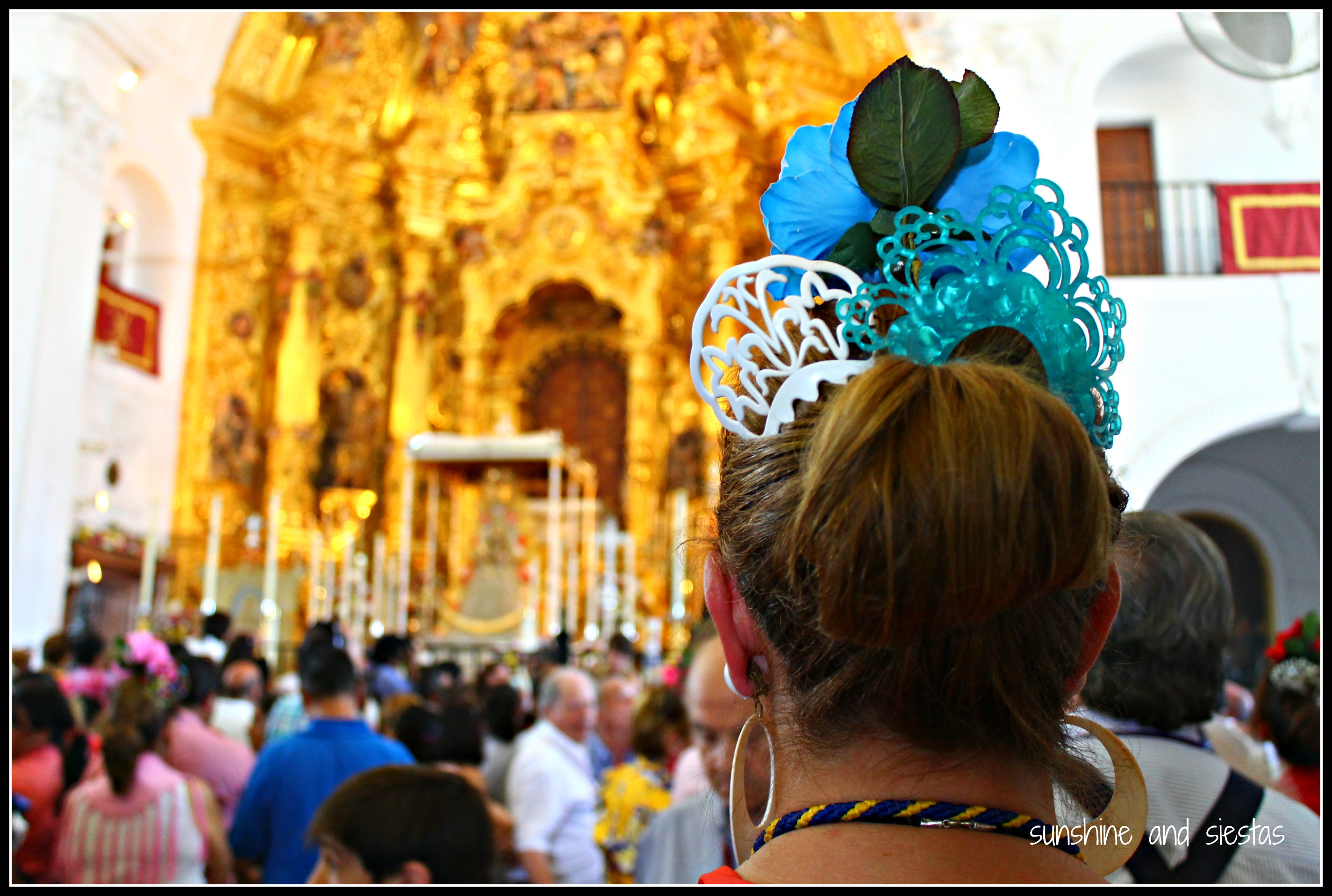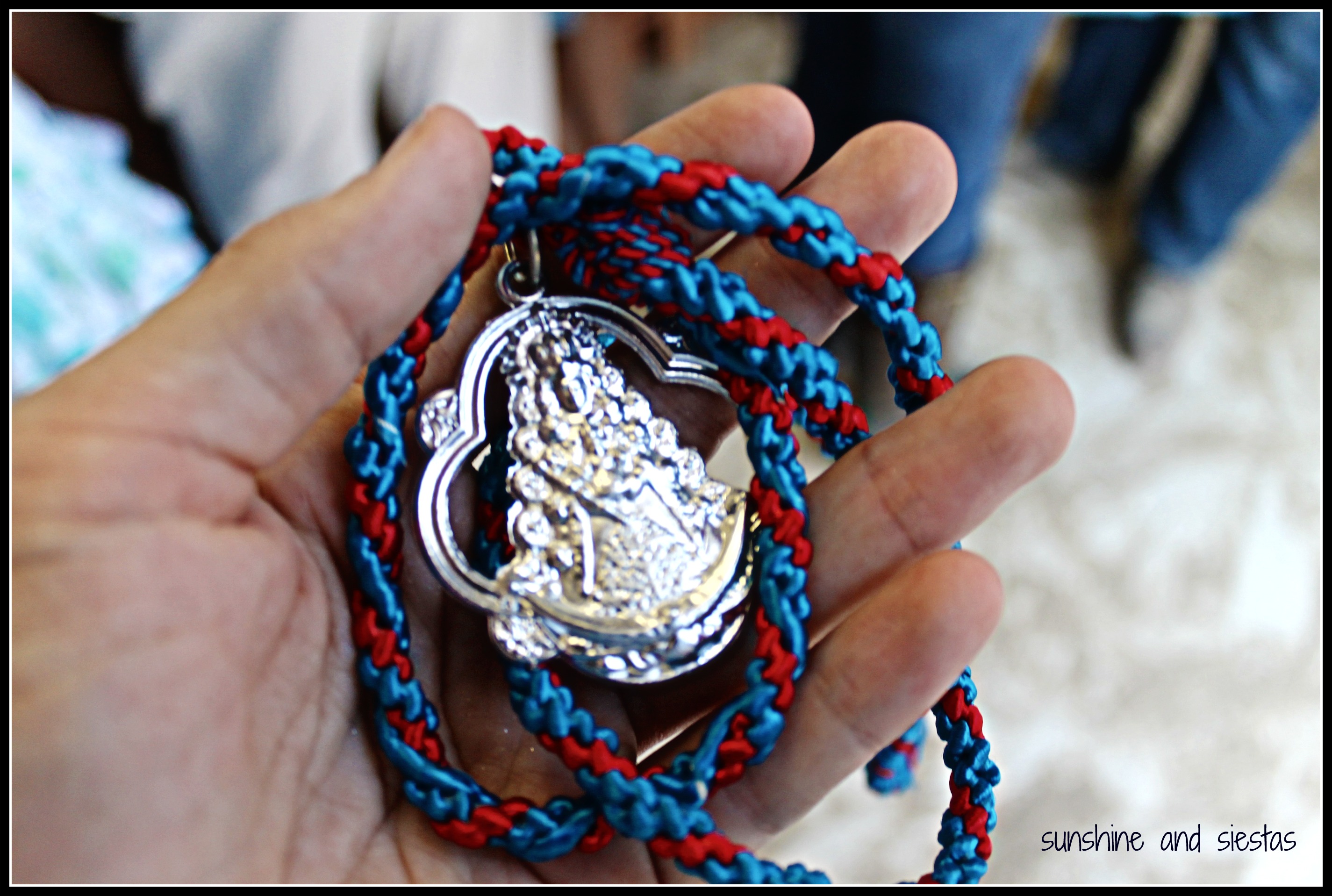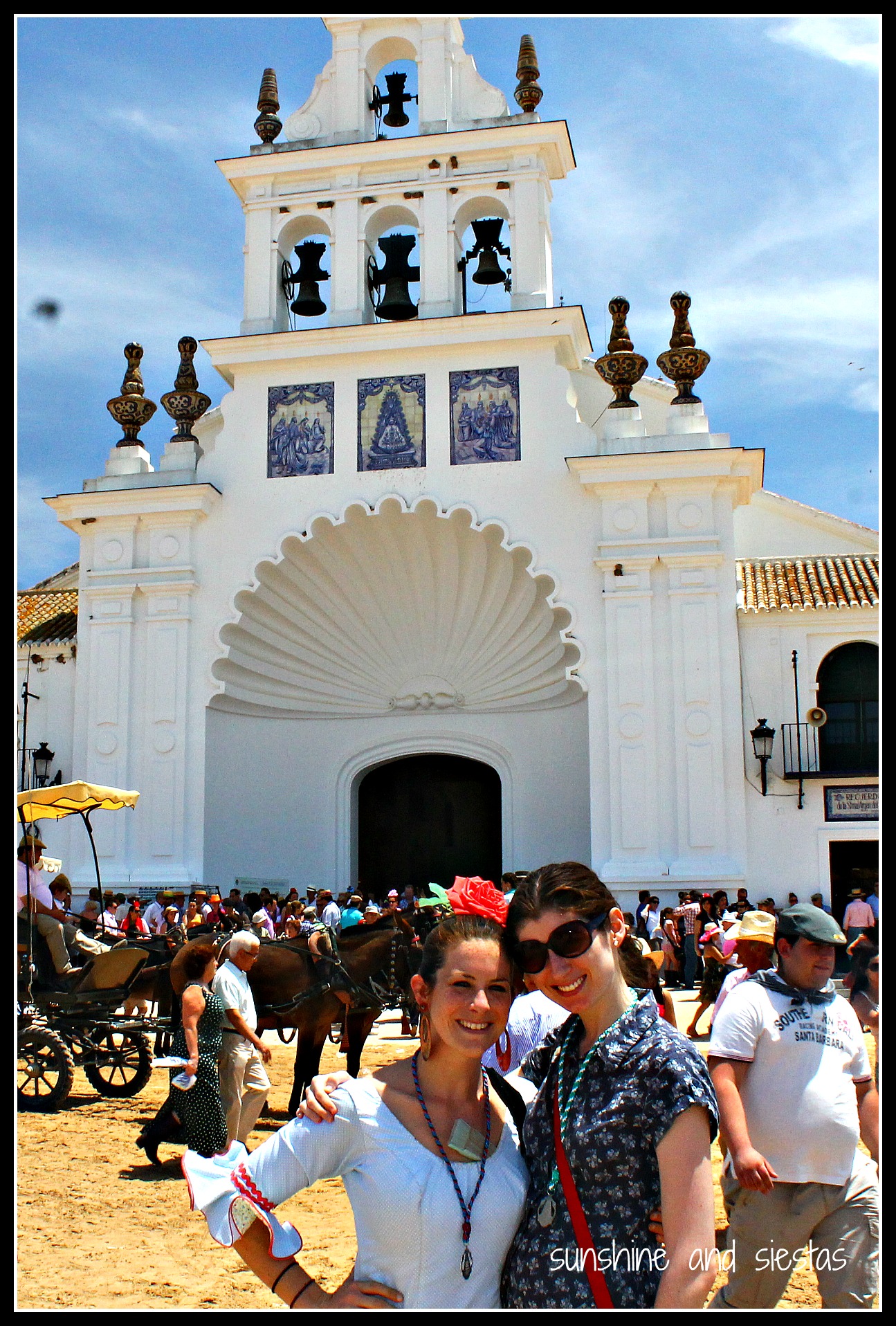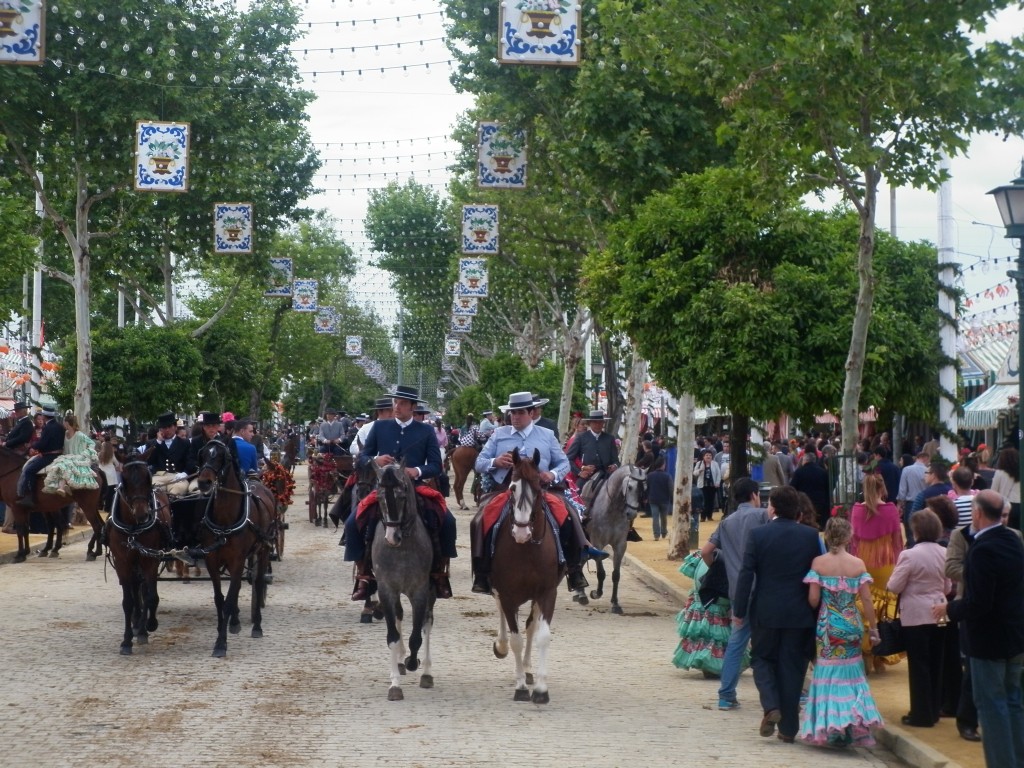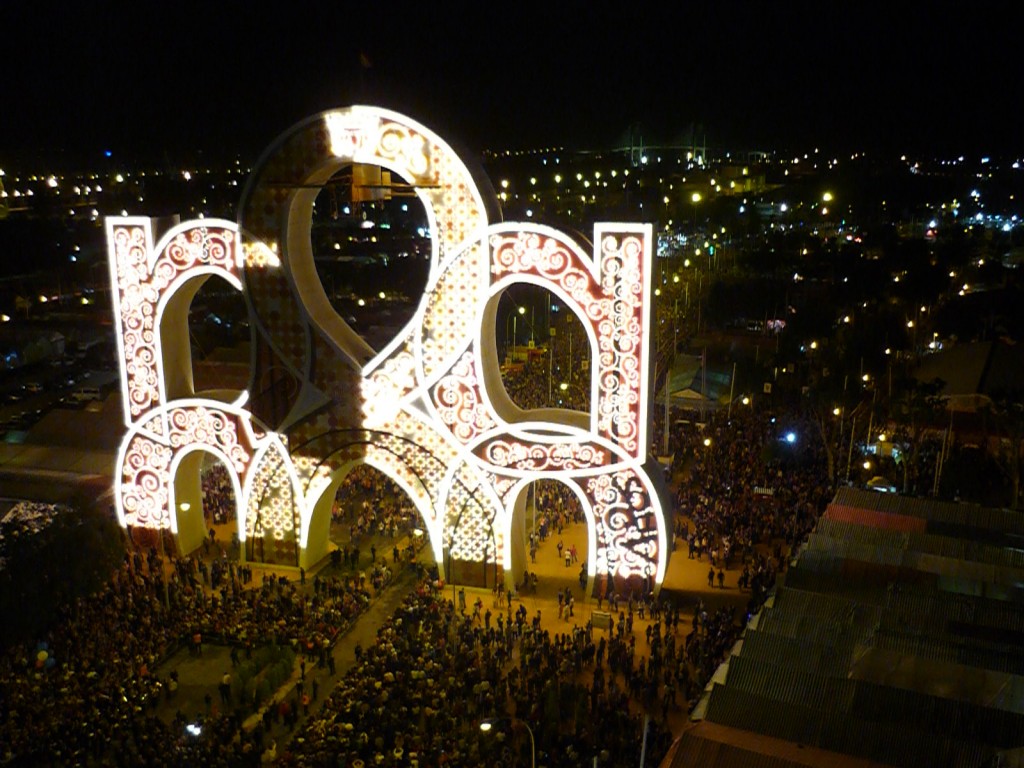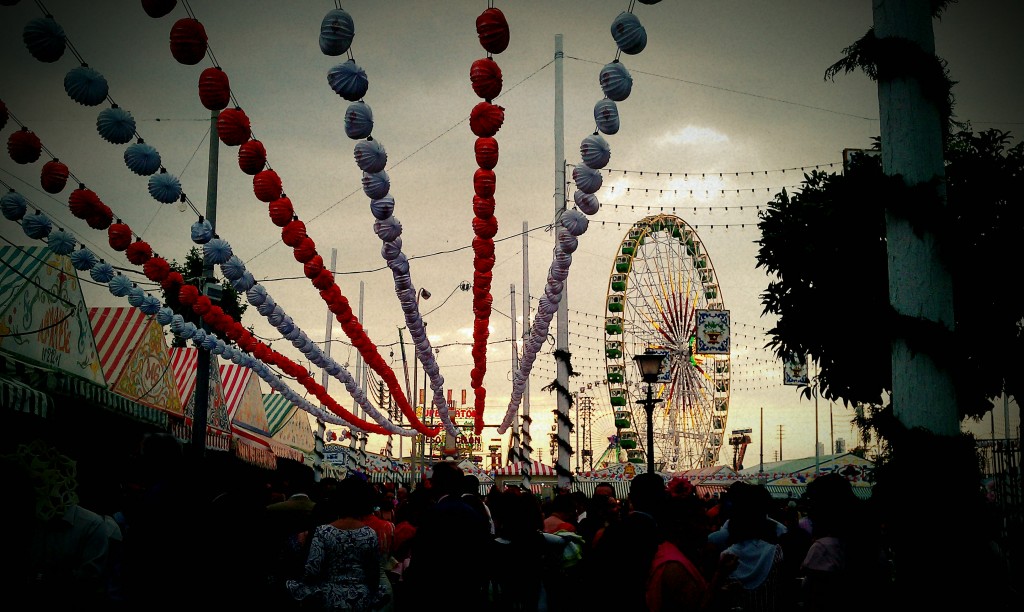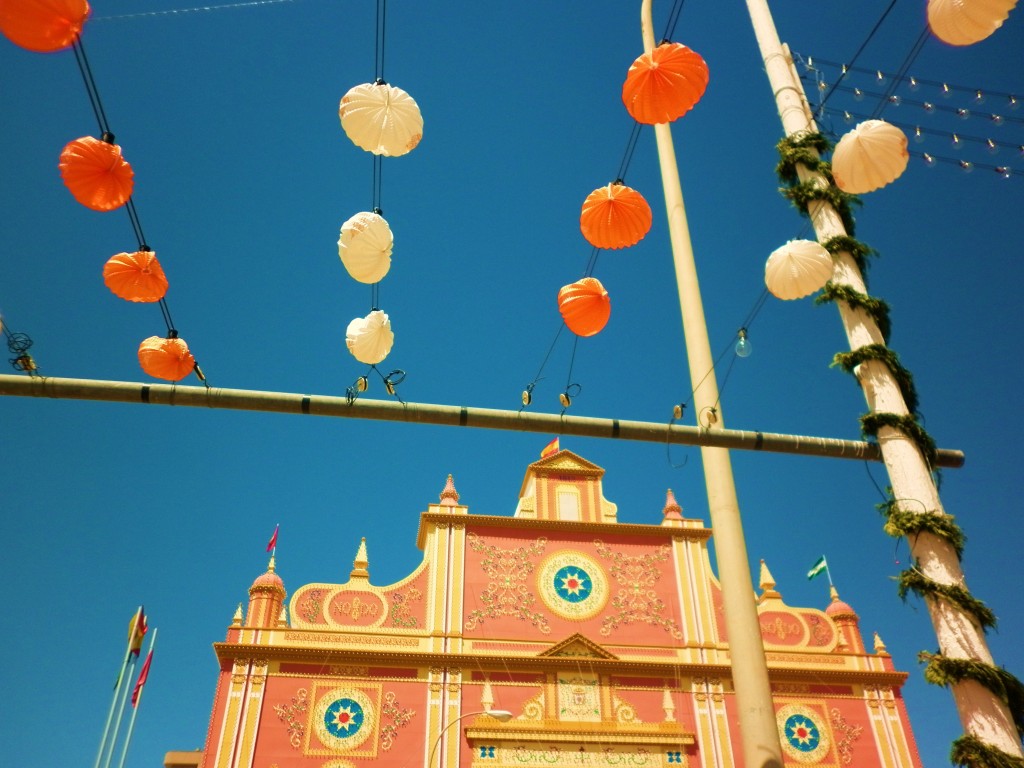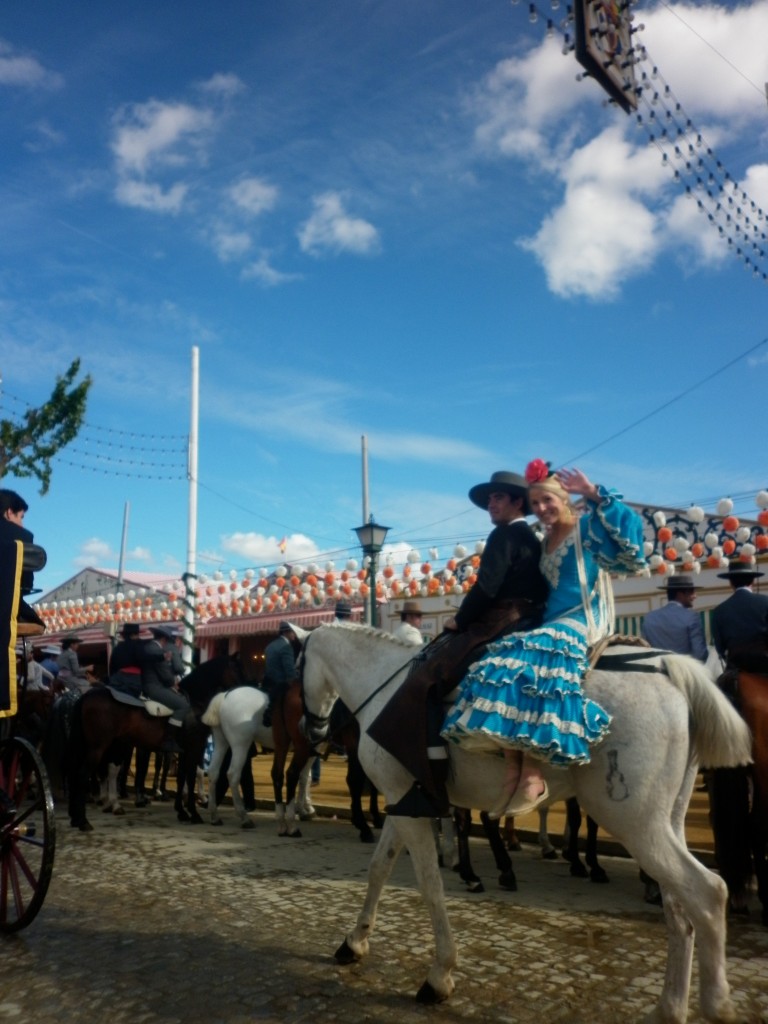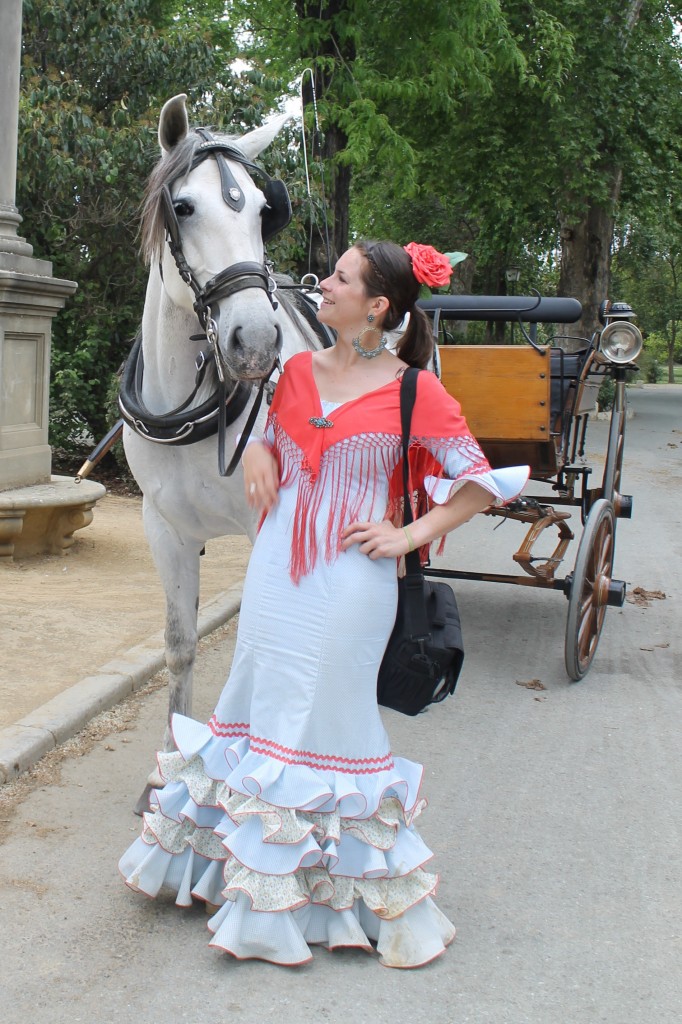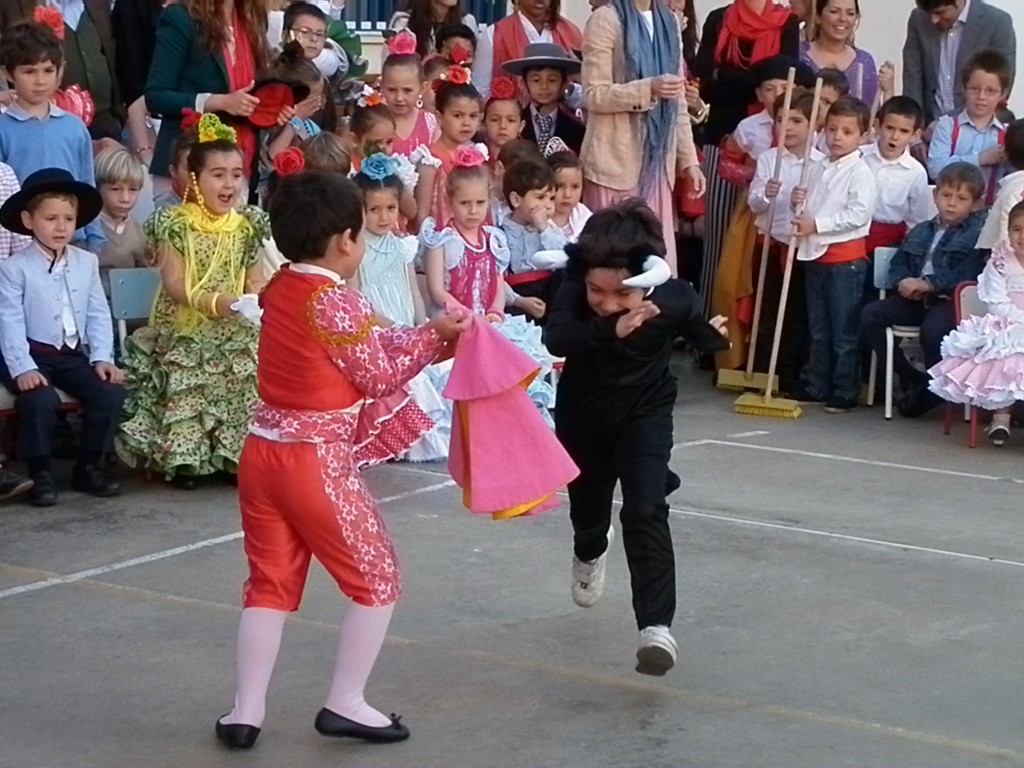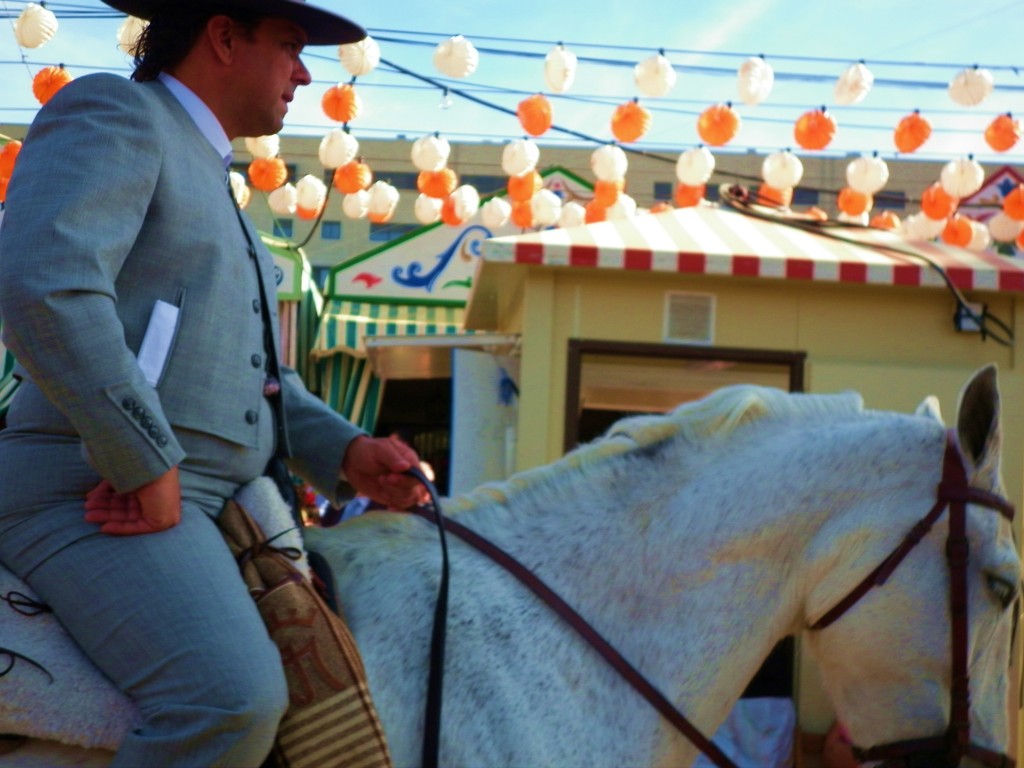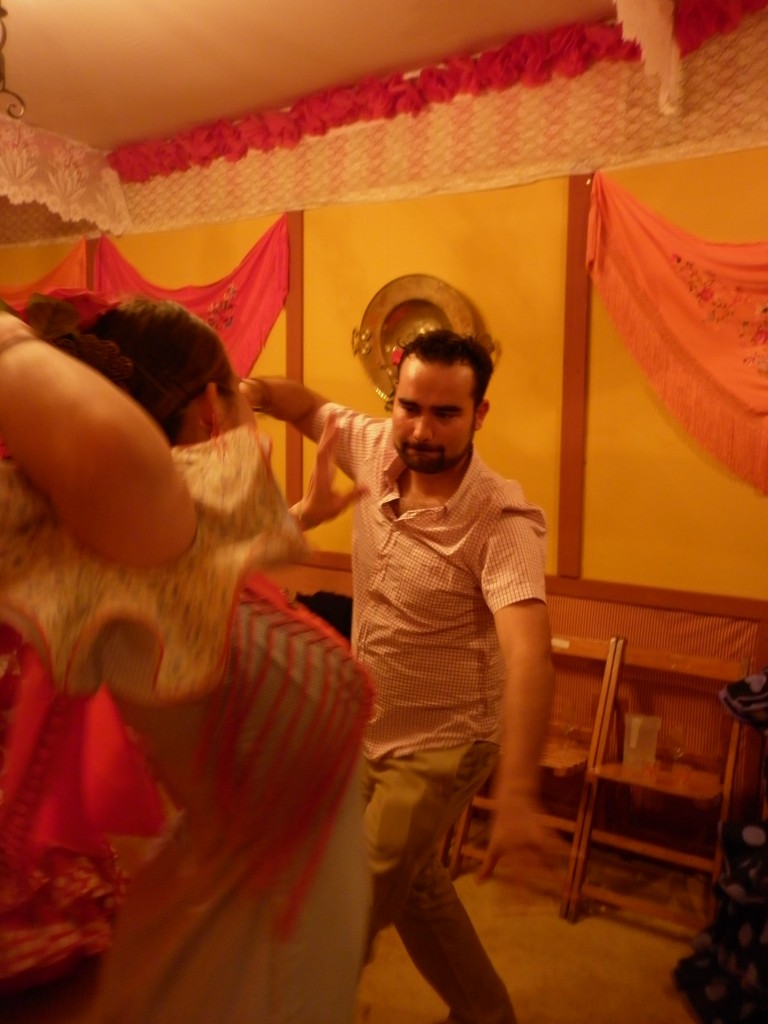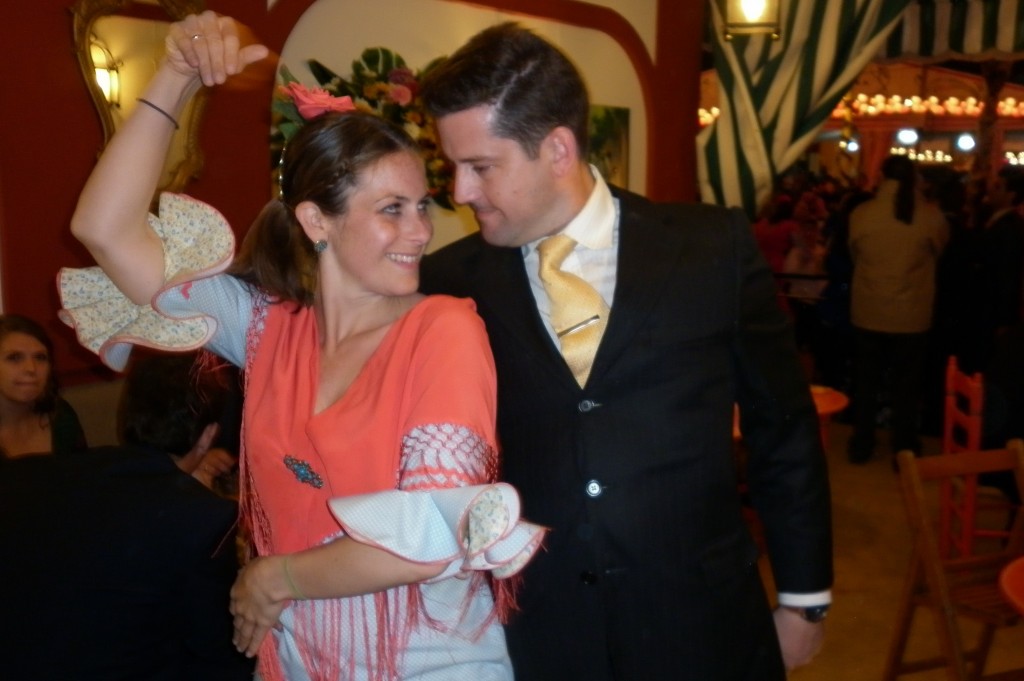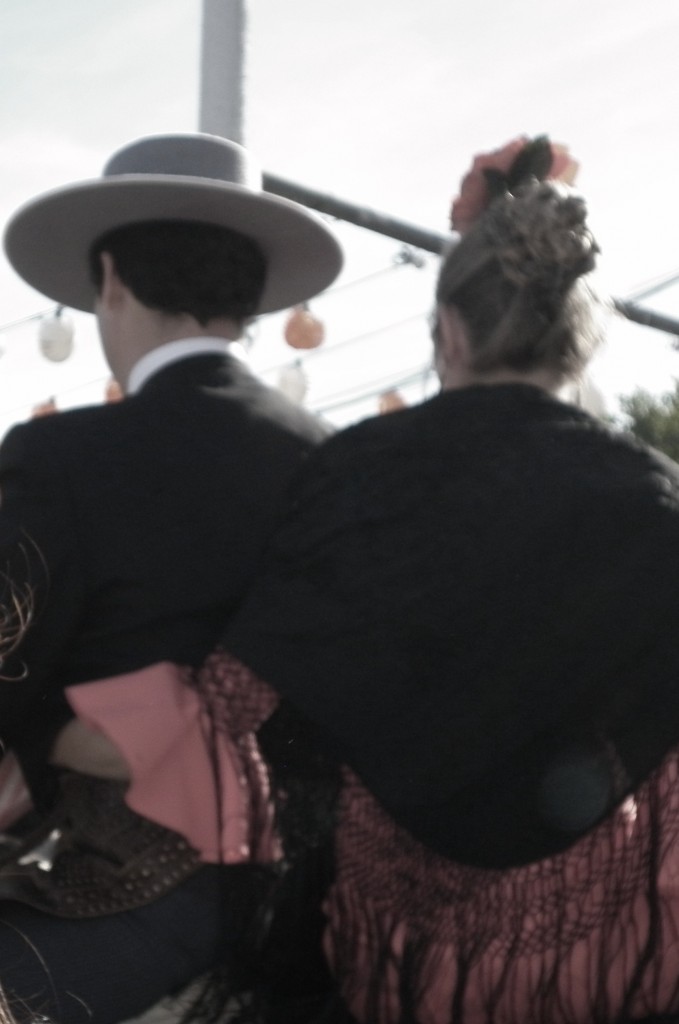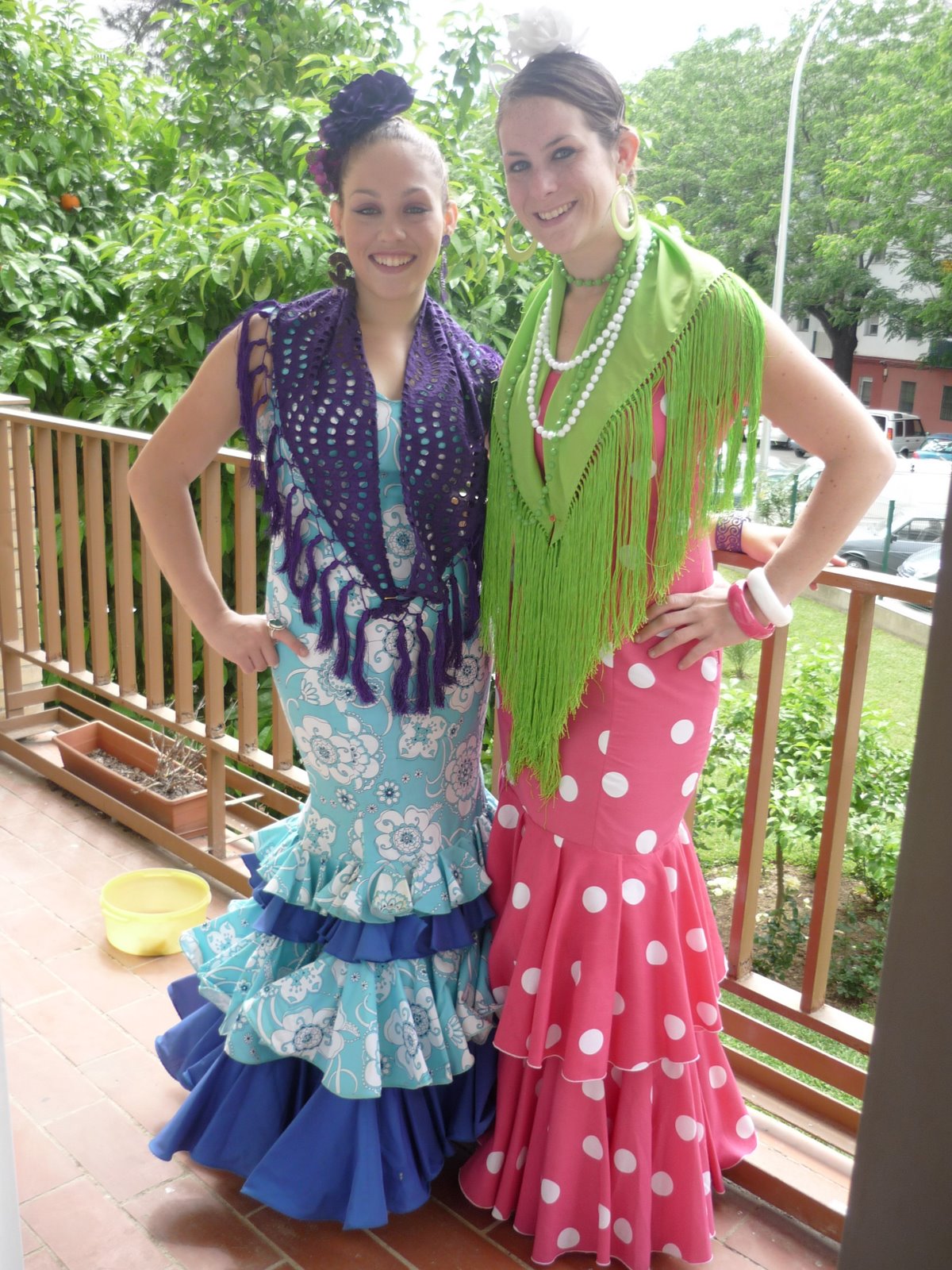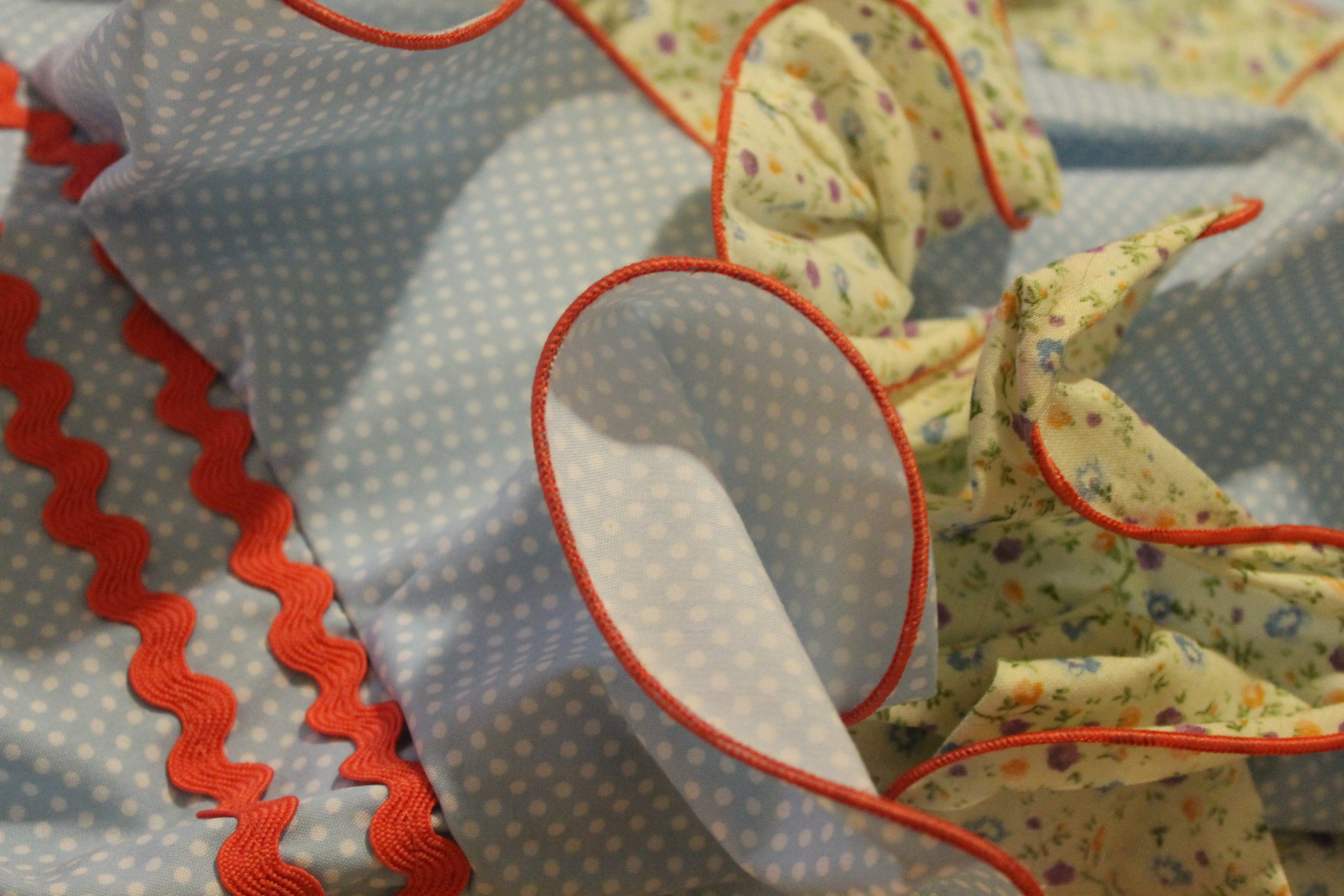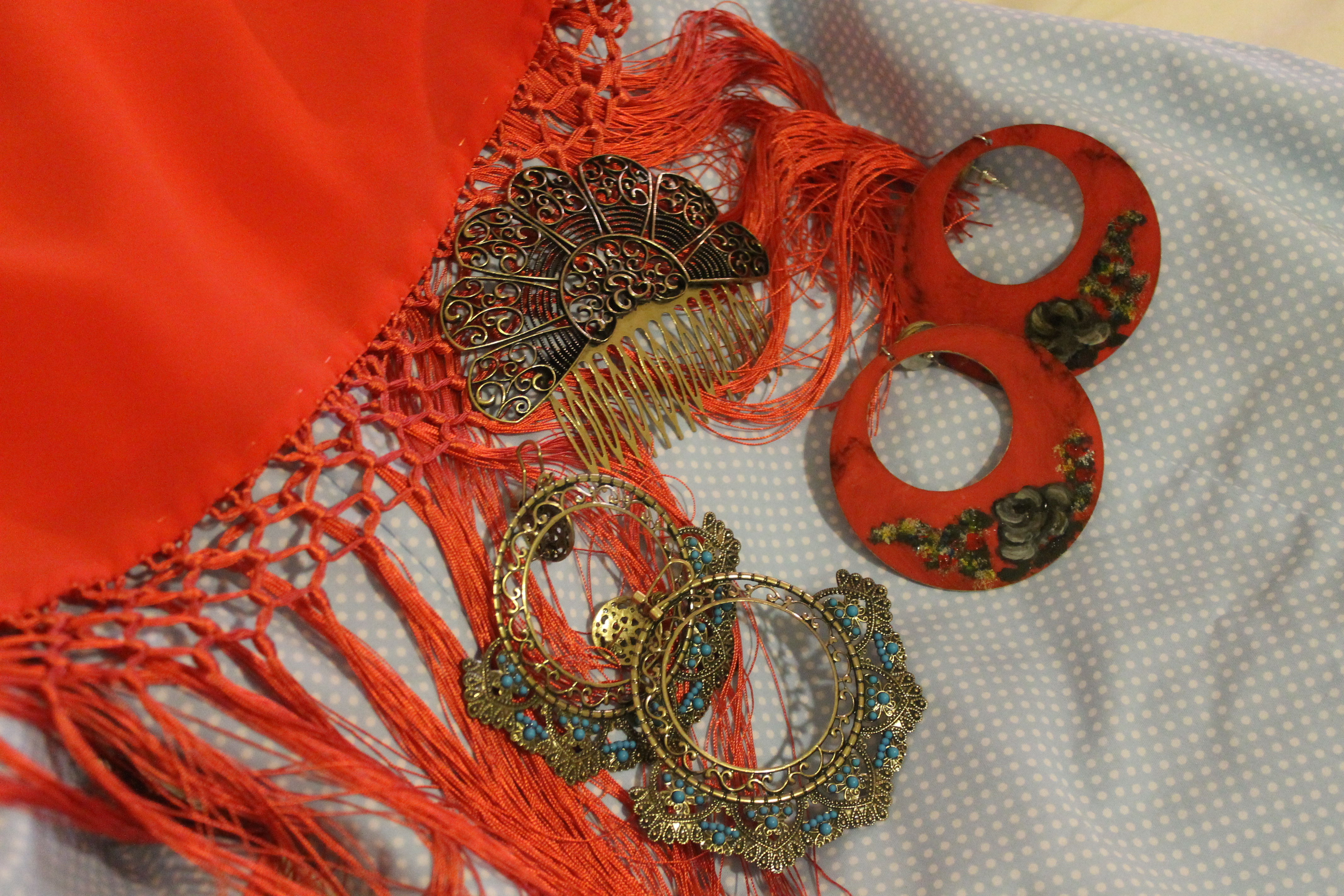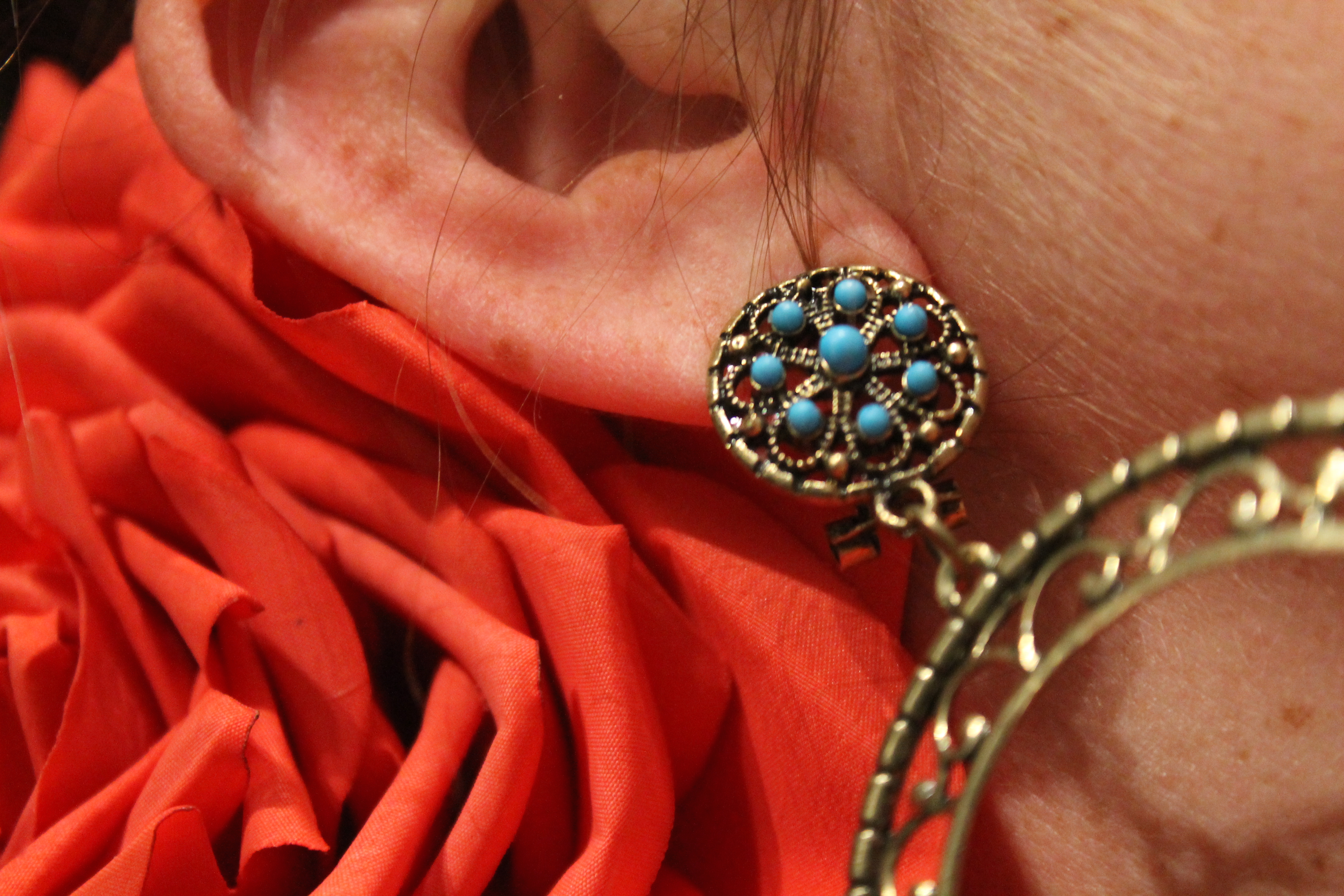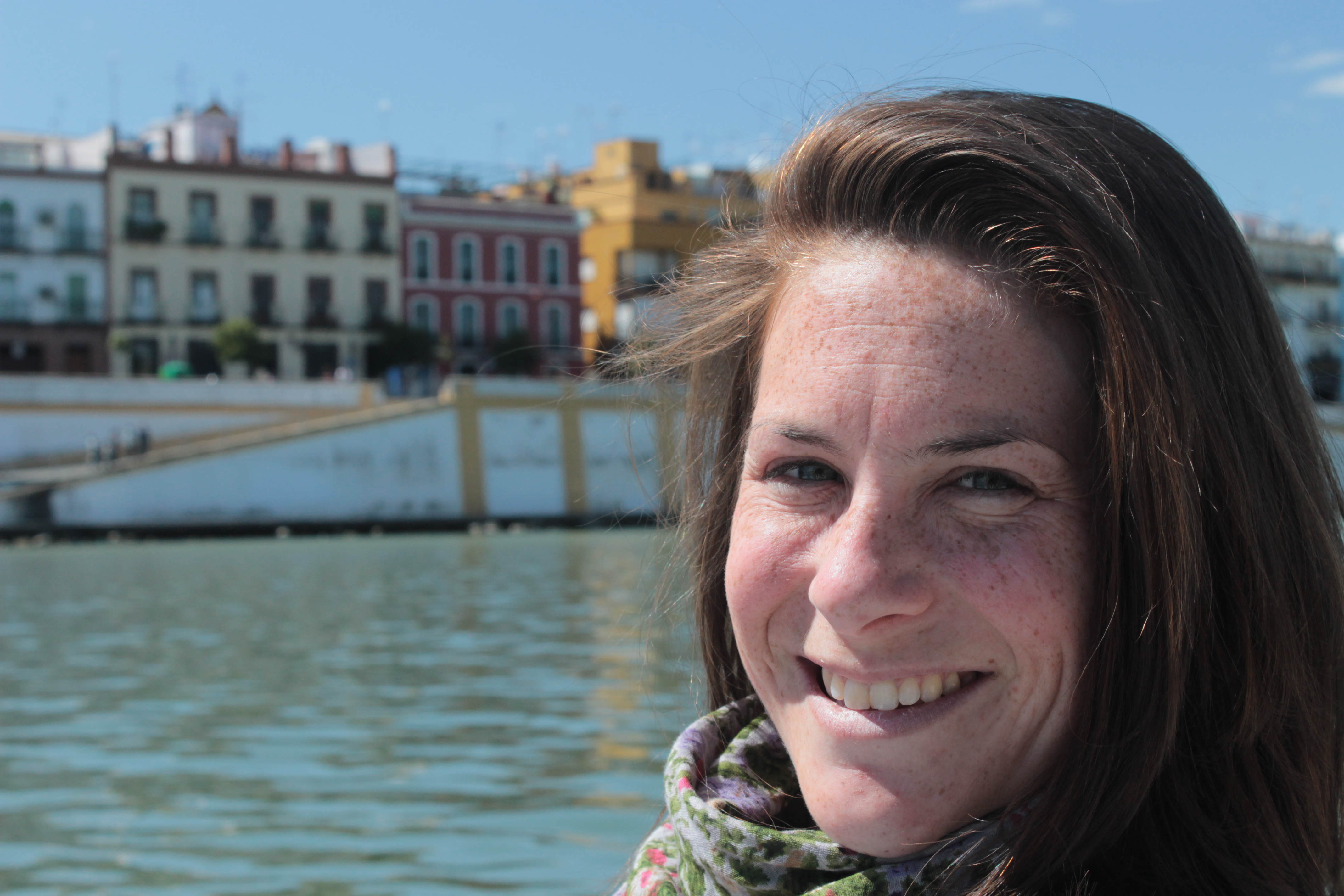Seville Snapshots: Arcos de la Frontera, Cádiz
Places with Encanto: Casa Hernanz Alpargateria
Calle de Toledo stretches from Madrid’s crowning Plaza Mayor all the way down a hill past La Latina’s churches and bars to the Glorieta de Toledo, where I first spent the night a weekend in Madrid. Alvaro and I hiked up and down that weekend as he took me to his favorite places for a caña–tapa.
I’ve spent countless days around the Plaza Mayor, snacking on bocadillos de calamares, browsing souvenir shops. In the quest to spend a few hours before the Novio came to meet me in Madrid, I climbed up Calle de Toledo, on my way to Mercado San Anton in Chueca. Remembering an article about shopping in Madrid, I was delighted to stumble across a Madrid institution, Casa Hernánz.
Wedged into a small workshop space just a block of Plaza Mayor, I peered in the windows showcasing the dozens of raffia-soled shoes, a popular folk style called espadrilles or alpargatas. Standing on my toes, I found a pair of beige ankle-strap sandals with a broad pink strap across the toes.
“You should take a picture to show at the mostrador,” the black-clad woman behind me said to her daughter. “This line is so long, you won’t even remember the style you want by the time you’re attended to. My company in line were two Americans with suitcases, a Crocs-wearing priest and an endless array of older madrileñas. I sighed and pulled out my smartphone, settling in for what was sure to be as long a wait as the bank.
The line inched along. To pass the time, I looked into the display windows immediately next to door which were lined with a rainbow of linos, the thin thread that used for the superior part of the shoe. The soles are made of esparto, a coarse, vegetable thread that is woven together and glued onto another thin rubber sole. The lino is then hand-sewn onto the sole, called the plantilla. This type of shoe is typical in many regional costumes, come in colors as diverse as salmon or turquoise, and are often made with ribbons that lace up the calf. I myself swear by them during the Feria, as they keep my feet cool during the long nights of dancing.
As I inched closer to the shop doors, the woman behind me tried sneaking in to sit on a long wooden bench opposite the counter, which stretched from one end of the workshop to the other. The priest put up his hand, a look of anger on his face. “Senora, I’ve been waiting in line all morning. Do. Not. Pass.”
She shrunk away, probably clutching a rosary, and cursed the priest. I couldn’t help but laugh. Now that I was within the door, straddling the hot street and the even hotter workshop, I was surrounded by shoes, fabrics and the plantillas, stuffed into bookshelves behind the counter. Some were bare, while others, separated according to size, already had the fabric attached. Shoes climbed up the wall, from finger-length baby sizes and on up. Even more styles than I’d seen outside were showcased in wire cases, and miles of different types of rope snaked across the counter. An old fashioned phone called in special orders por encargo and a woman attended to them, scribbling notes and measuring soles for whoever was on the other end of the line.
The priest was there for new alpargatas in a simple black style (good, throw those Crocs away, Padre!) and a white twisting cord for his robe. The two Americans opted for simple lace-up styles in royal blue, and I suddenly had Rosary Lady pushing me to the end of the counter.
The lady on the other side of the mostrador smirked at me. “Que querías?” I fumbled for the words, wishing I had snapped a shot of the sandals I’d been eyeing. I pointed to the baby shoes just behind me. “Um, my friend has a baby. He’s small. I want some of the shoes for him,” I managed.
“Well, how big is he? How old?” I can barely remember my own shoe size in Spanish, let alone Baby Jack’s, who I had never met. I got him Cubby Blue to make his parents happy and motioned to a white pair of strappy heels for my sister. When it came time to explain the ones I liked, she knew immediately and went to fetch them.
Phew.
In the end, my wide feet wouldn’t make it into the shoe, and I knew I couldn’t cram anything more into my bag. Between my sister’s tacones and little Jack’s shoes, I paid a mere 34€ – far less than the priest and his miles of cordón!
Casa Hernanz is located on Calle de Toledo, numbers 18-20, nestled just next to the sprawling Plaza Mayor. Hours are 9:00am -1:30pm and 4:30 – 8:00pm Monday through Friday, and Saturdays 10am – 2:00pm. Lines can get long, so be sure to arrive early. Products and services can be consulted on Casa Hernanz’s website.
I’m looking for ideas for two new categories for Sunshine and Siestas – Typical Espaneesh (think, the mid morning cafelito, carrito de compras or finquillo) and Places with Encanto. If you’ve got a place to suggest or are interested in guest blogging about it, leave me a message in the comments, or write me at sunshineandsiestas @ gmail . com.
For the Love of the Dove: El Rocío
I’ve never been one for Bucket Lists, but often set travel goals for myself. When I was 20, I decided to do a 25 before 25, making a list of my top-five destinations when I moved to Spain two years later. Twenty-twelve meant no resolutions, just a few ideas for travel goals during 2012: one new country, one off-beat travel activity and one nationally recognized festival, in Spain or not.
It’s the end of May and I’ve just completed my goals. I think I shall hashtag this as #travellover. Last weekend, my sevillana half orange, La Dolan, and I went to visit Spain’s lushiest Virgin Mother, La Virgen del Rocío.
The festival of El Rocío is one-part religious pilgirimage, one-part full-blown fair and two parts party: those devoted to the Virgen, known as the Lady Of the Marshes or the White Dove (Nuestra Señora de Las Marismas, for the hermitage’s proximity to the protected swampland of Doñana National Park, or the Blanca Paloma), make a pilgrimage from their towns to the immaculate white church outside the village of Almonte. This can be done on foot, on horseback, or by riding in oxen-driven carrozas, a type of temporary covered wagon. Arriving on or before the Saturday of Pentecost, often sleeping and eating outdoors, the rocieros then gather in El Rocío for a series of masses, parades and the famed salta a la reja.
We arrived just before noon on Pentecost Sunday. I wore my celestial blue traje de gitana, coral flower on my head, while Cait opted for a breezy skirt. It was over 90º out, but the rocieros were in their typical costumes: the women in trajes de gitana or faldas rocieras, a skirt with ruffles suited for walking, and high leather boots. The male counterpart is a traje corto, with tight cropped pants made for horseback riding. I made a face at Cait, suddenly very hot with the sleeves of my dress and restricted in movement.
The whole village of El Rocío is like a town straight out of a Wild West film set – hitching posts set in front of modest houses, horses clopping gallantly around the sandy streets. It was difficult to walk with my espadrilles while dodging carriages, and sand soon filled my shoes.
As we neared the stark white church, a beacon against the bright blue Andalusian sky, we decided to visit the village’s most famous resident before going any further. As we neared, the tamboril drums and simple flutes that characterize the sevillanas rocieras grew to a furor, and the crowd standing under the scalloped entrance of the hermitage suddenly parted. The Pentecost mass had just ended, and a parade of the simpecaos, the banners carried by the different religious groups, had begun.
The knots of people ebbed and moved as the 110 hermandades, yes the same kind from Holy Week, from around Spain presented their faithful before the church and moved around the village’s dusty streets. From simple to elegant, each carry a symbol of the Virgen del Rocío. The pilgrimage dates back to the 17th Century, with the hermandad from Almonte, el Matriz, being the oldest. Following the banner come women in two straight lines on either side of the simpecao, carrying long silver staffs topped with images of their brotherhood’s virgen. Their necks were emblazoned with the same silhouette in the form of heavy pendants on the end of multi-colored rope cords.
The festival at the Aldea is characterized by religious devotion, of course, but there’s much more to it. As Cait and I reflected over our first action-packed hour, we listened to other bar-goers recount their tales. Once the hermandades arrive to El Rocío through the various routes from the East, West and South, they settle into houses that look like a giant corral or hotel around a central patio, with room for the carrozas and horses behind. Gines, Olivares, Villamanrique and Triana have enormous patios, and we peeked in to see the merriment between beers. People sing, dance and pray for up to one week during the pilgrimage and the celebration.
Feeling refreshed, we decided on visiting the Virgin herself. The temple is simple, white-washed, save the golden retablao and a few frescoes in the corners of the nave. Cola de batas, the boundy ruffles of the traje rociero, showed under confessional booths, and the romeros prayed to the Virgen Mother, who was kept safely behind a cast iron gate, called a reja. After praying the rosary that night at midnight, she would “jump over” the reja and be paraded around the village on the shoulders of revelers, called the salta a la reja. This is the culmination of the week’s events, and it signals the abandonment of the recinto and the camino back home.
Outside, we bought candles in the gift shop to take to the adjacent prayer chapel. There’s a life-sized statue of the Rocío that people press their candles to before lighting them and finding a place to prop them up. The whole chapel was cool, smoky and silent – a far cry from the music emanating from the casas outside.
We spent the rest of the afternoon walking through the streets, popping into bars for a beer (and relief from the hot midday sun), visiting my students from Olivares and trying to keep the sand out of our shoes. We got on the bus six hours after we’d arrived, absolutely exhausted and still bigger feriantas than rocieras.
Have you been to El Rocío or done the peregrinación? What was your experience like, especially on the road towards the Aldea? For more pictures, be sure to check out my Facebook page and become a fan for up-to-date photos and posts about Spain and Seville.
¡A Vivir, que son (seis) días (de Feria)!
I’ve written for Backpacking Matt and The Spain Scoop about my favorite fiesta of the year: the Feria de Sevilla. Curve-hugging dresses, horse carriages and thousands of bottles of manzanilla sherry characterize the fiesta más alegre of the South just weeks after the gold-laden pasos are stored in their temples.
While in my surrogate caseta, Los Sanotes, my friend Susana’s cousin came to look for me. Yanking my beer out of my hand, she introduced me to a 60-something couple who were standing, dumbfounded, against the wall of the temporary tent. Introducing myself, they fired a million questions at me (whereas I asked just one: Would you like anything to drink?) about the history of the Feria, what it costs to be a member of a caseta and how to best go about enjoying themselves. For as much as I know about Feria – pescaíto etiquette, the names of the streets and how much a jar of rebujito costs – Feria is all about viviéndola. Being with friends, having a buen rato while wearing an enormous flower on yourself and admiring the trajes de gitana are all just a part of the week at the Recinto Ferial.
If the Feria is all about living it up, I’m all lived out. Three rides in horse carriages, two broken shoes and having to wash my flamenco dress three times to get all of the dirt out must mean that this ferianta did more than her fair share of dancing sevillanas and capturing the essence of the fair in pictures. Below each picture is a line from a sevillanas song (a four-part flamenco lite that’s heard emanating from each of the 1000+ casetas) with a link to the song on youtube. As the popular sevillana, A bailar por Sevillanas says, Si Ud. no ha visto la Feria, se la voy a enseñar (If you’ve never seen the Feria, I’m going to show it to you):
Ya huele a Feria, y olé, ya huele a feria
Once the somber processions and palios-encased Virgins are safely back at their churches, the construction of the main gate, called La Portada, is nearing completion, dry cleaners are working overtime to press volantes (ruffles), and the talk of Feria is imminent. Ya huele a Feria, it smells like Feria, and ¡olé!
La Feria se ilumina con su belleza
While the carnival rides and casetas are open, the fair doesn’t officially begin until midnight on Monday, after the traditional pescaíto fried fish dinner. The mayor waits until precisely the right moment to flip the switch that lights up the main gate, called the portada, and the thousands of paper lanterns, farolillos, that illuminate the street. Almost immediately after this moment, called the alumbrado, the bands start up and everyone starts dancing. ¡Olé, esa feria!
Vámanos pa la Feria, cariño mío
I’ve worked out a math equation: the less days that remain until the alumbrado, the more antsy I am. This year, as in years past, we’ve gone to have a few drinks before dinner on Sunday and enjoy the fairgrounds without people or horse carriages. The Calle del Infierno, with its circus tents and carnival rides, is the only really lively part, which means we get special treatment in the caseta. This year, I decided to skip out on the alumbrado and get a good night sleep, only to be restless and not fall asleep until 3am. I wanted to shake Kike awake and say, ¡Vámanos a la Feria, cariño mío!
Debajo de la portada, se la voy a enseñar
Imagine this: a maze of more than 20 streets, all named after bullfighters, more than 1000 red-and-white-and-green-striped tents, and a mess of people wearing brightly colored dresses. Add in all of those pesky horse carriages that clog the streets until 8pm, and there’s simply just one place to meet: under the main gate. There’s a whole lot of public casetas clumped nearby (PSOE, Garbanzo Negro, San Gonzalo), so this is a good place to begin your afternoon if you’re waiting to meet friends.
Me gusta el mosto en noviembre, y mirar al cielo azul
Feria is about as propio to Seville as the Taste of Chicago might be to my native Chicago. It’s a whole big gathering of people admiring beautiful Andalusian women, Jerezano stallions and drinking local wine. One of my favorite sevillanas is Los Amigos de Gines’s Yo Soy del Sur, I’m from the south, which pays homage to all of the best things about Andalucía – the bullfights, the crops, the never-ending blue sky, the pilgrimages. I get chills listening to its slow compás, these are my customs, and I never want to lose them. Ojalá…
Se enamoró mi caballo de una yegua de Castilla
If I could bring two people to vivir la Feria, I’d have my dad chugging beers with Kike by night and my mom riding in Leonor’s horse carriage by day. From the early morning hours until the last call of 8pm, the streets jingle with cascabeles as hundreds of horse carriages parade around the Real. It’s not cheap – the little licence plate needed for circulating on the streets costs 86€ an hour!! I love living the feria by day to admire the stately Andalusian stallions which carry manzanilla-wielding men and gorgeous gitanas on their backs, and am lucky enough to have friends who bring carriages! Now if only I’d spot the Duquesa de Alba!
Me gustan los toros serios y los toreros con arte
Apart from the horses, the toros de lidia bravely stare down toreros six times a day during the week’s corridas. Nothing says Feria like a stroll around the fair in the morning, mantilla firmly on your head, with an afternoon at the Maestranza. From this point in the year, the Sunday afternoon bullfights officially start. While I’ve been just once to a bullfight in Seville, we do get to enjoy a mini session at my school: the preschoolers dress up as the toros and bullfighters, and we all chant, ¡Torero, torero! as the jury decides to award the valiant baby bullfighters with an oreja or two. Arte, pero arte.
Me metí en una caseta que estaba llena de pijos, todo el mundo en traje y hablando de su cortijo
As I’ve talked about the casetas before, it’s important to note that they’re private and guarded by door guys. I once invited my friend Lindsay to Susana’s, and she told the portero that she was friends with the guiri inside. He shook his head and said, no foreigners here! Most of the tents are owned by businesses, political organizations, the armed forces and big groups of friends, but there’s no denying it – most of the people who own the tents are rich enough to pay for them. It’s not cheap – Kike and I pay 75€ for the year, but we’re just two of the hundreds of socios . Whenever I am invited to a new caseta, I like to take in the ambience of the people who are talking about their horses, wearing nice suits, and have obviously come from money. I’ve been to some of the bigger and nicer tents in Feria, but prefer the less pretentious ones (and this hilarious sevillana – I went in to a tent full of preppy people, everyone wearing a suit and talking about their horse farm).
Mírala cara a cara, que es la primera
Once night falls and all of the socios have had dinner, the flamenquito bands arrive for live music and two lines of dancers form to dance sevillanas. This four-part dance is like a coqueteous encounter between two lovers: each step, they seem to get closer and more sensual. You can dance with up to four people, either boy-girl or girl-girl (but who care if you dance boy-boy!) and the music doesn’t stop until 5am. My favorite memories have been dancing – with friends, with socios, with my partner, with my students – and each year I feel more confident in my dancing. In Los Sanotes, I’m often invited to dance, and I swear it’s the least American I feel during the entire year.
Esa gita, esa gitana, se conquista bailando por sevillanas
When Susana first took me to try on my very first flamenco dress, I knew not to expect anything else but a lot of drinking and feeling very awkward in my tight dress. I was a hot gitana mess, but each year I feel just a bit more flamenca and love that the Novio has some amazing moves when it comes to dancing sevillanas (even if I have to drag him onto the dancefloor!).
Pasa la vida, pasa la vida y no has notado que no has vivido
Before you know it, the tents are coming down and the fairground is vacant. Seven days pass by in a blur of sherry and polka dots, but some of my most treasured times in Seville have been had at the fairgrounds. The famous sevillana Pasa la Vida by Albahaca talks about how life moves by so quickly and often we forget to live it, but the opposite happens to me during Feria. I can sleep four hours a night and stand dancing for 14. I feel sexier shaking my culo in my dress. I feel confident in calling everyone I know and finding them somewhere in the Real to have a drink.
When it’s all over and life goes back to normal, some little spark inside me seems to kind of flicker out, like my Amigos de Gines sing in my absolute favorite, Algo se muere en el alma. I’ve got to wait 51 excruciating long week to pin the flower back atop my head and my espartos to my feet. Something, indeed, does die in your soul.
Ever been to the Feria de Sevilla? Any good stories to share? Celebrity sightings?
How to Dress for the Feria de Sevilla
Chhh, chh, chikiiiiiiiiiiiiiii!! Veeeeeh.
Why, WHY do store assistants have to cluck in this country, I sighed, my sinus infection suddenly growing worse as I waited for her to stride over to me.
Ehtá floooh, ¡qué noooo! Plucking the flower the size of a softball out of my hand, she replaced it with a bigger one. This one is right. I gawked at the mirror, laughing at my red, swollen eyes and the coral monstrosity perched atop my head.
I wished Cait was with me to witness yet another cultural mess up on my part. Just a few weeks earlier, I went to have my traje de gitana, or flamenco dress, taken out. My butt suddenly didn’t fit into it any longer, so the shop assistant clucked at me to come out of the dressing room, bare-assed, and stand with my it to the mirror while she adjusted it. This flower is for a ten-year old, much to small for your head.
It’s now sitting in my box of flamenco accessories, called complementos. I am no match for old ladies at the Corte Inglés.
Spring’s azahar and incense also bring along the liveliest festival in Andalucía, the Feria de Abril. During my first winter living in Spain, my friend Susana offered to take me to buy a cheap traje at the Molina factory outlet. Though simple, my dress made me fit in when I first showed up at the Real.
But I was CLUELESS about the complementos – I chose earrings and flowers fit for little girls. The rule of thumb is, literally, the bigger, the more gitana you are.
Case in point: The style every gitana’s wearing. The cani ruffle sleeves are big, as is lace, flouncier skirts (mermaid cut is soooo not gitana this year) and lunares as big as a melon.
I chose something a little more classic, with a scooped neck and long sleeves (I’d only had sleeveless before), three volantes and enough arte to knock Calle de Gitanillo de Triana (olé la más bonita de la Feria!) on its feet.
As for complementos, I had to venture of solo, as my Feria +1, Kelly, won’t be going this year, and Cait was in class. Remembering the equation of guapaness, I chose to match the coral colored rickrack on the volantes with just a toque of turquoise. My first stop was in Mateos Complementos, C/Francos, 6, where much of the jewelry was handmade.
Showing the attendant the color of my dress, he helped me pick out a pair of lovely coral hoops that were painted with a beige flower, matching my color scheme perfectly. He tried to show me a mantilla shawl, but I had one and assured him that the color was the same as the earrings. He said the bright color would look lovely next to my eyes and pinkish skin (I sound like a mole, ew).
Mateo opened a glass case and took out two beautiful combs in oro antiguo, carefully positioning them in my ponytail. Alá tú! he crooned as I looked in the mirror. Sold and sold. ¿Qué pasa, te gusta la Feria? he asked to my scoffs. Asking me if I like Feria is like asking me if I like ice cream.
I peeked in the other stores along the street and in the token Don Regalón. No cheap plastic necklaces this year, I promised myself.
As I browsed the shelves at the Corte Inglés, Clucky came up to me with the flower. I knew I had no choice but to buy it, along with the earrings I bought in oro antiguo with just a hint of blue to match the peineta. I’m discovering that my ganas for Feria is becoming proportionate to the days left until the main gate, fashioned after the Iglesia del Salvador, is lit up and Feria officially begins.
Are you planning on heading to la Feria de Abril, or have you been? If you need me, I’ll probably be on C/Gitanillo de Triana, y olé! And now, a bailar!
Signs of Spring
While it’s no secret that I love this short-lived season in Seville, we are getting it a bit early. It’s technically winter for a few more days, but we’re already enjoying longer hours of sun, warm temperatures and very little rain – in Galicia, it’s rained 30% less than normal. While I’m all about a rainless winter (I’m a Chicagoan, so the less nasty weather we have in Seville, the more I’m convinced that this is the place for me!), it may all come during Spring’s big festivals, Semana Santa and la Feria de Abril.
Spring is in full-swing here, so I’m set to enjoy. Seville’s hallmarks during primavera are well-known and best enjoyed outdoors. We’re enjoying temperatures in the low 70s, azahar in full bloom and festivals atope. Though April showers may bring more flowers come May, I’m heading out on every sunny day.
